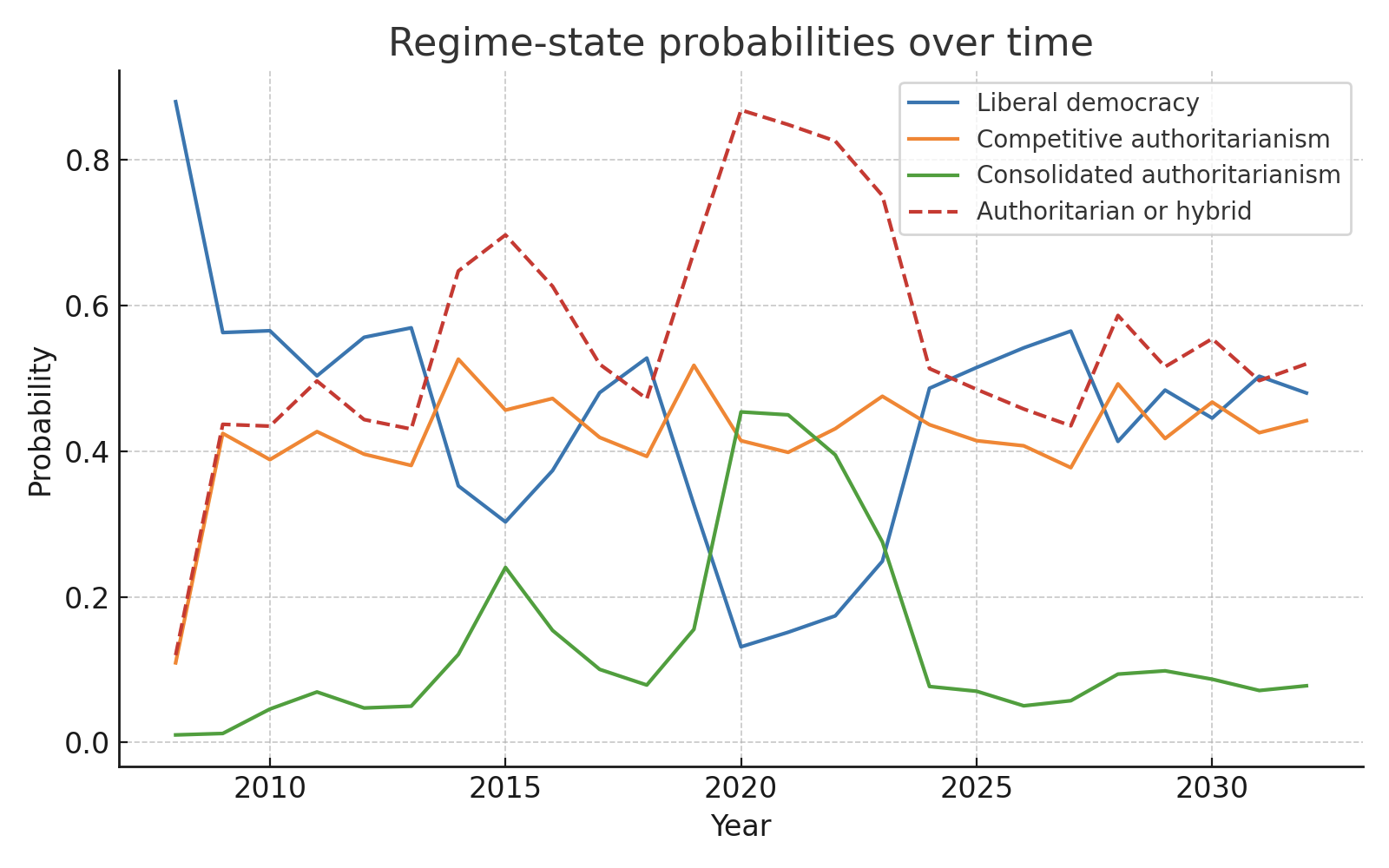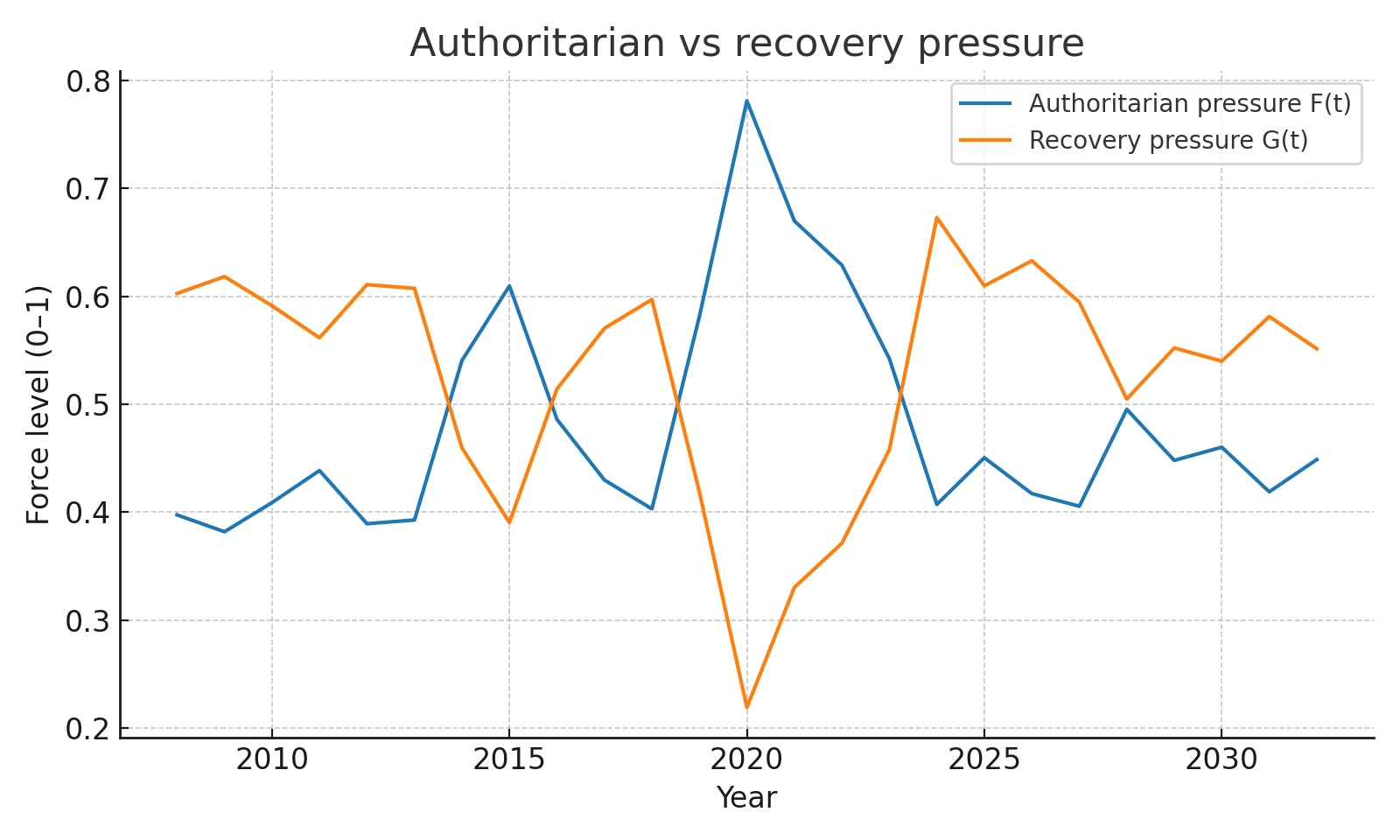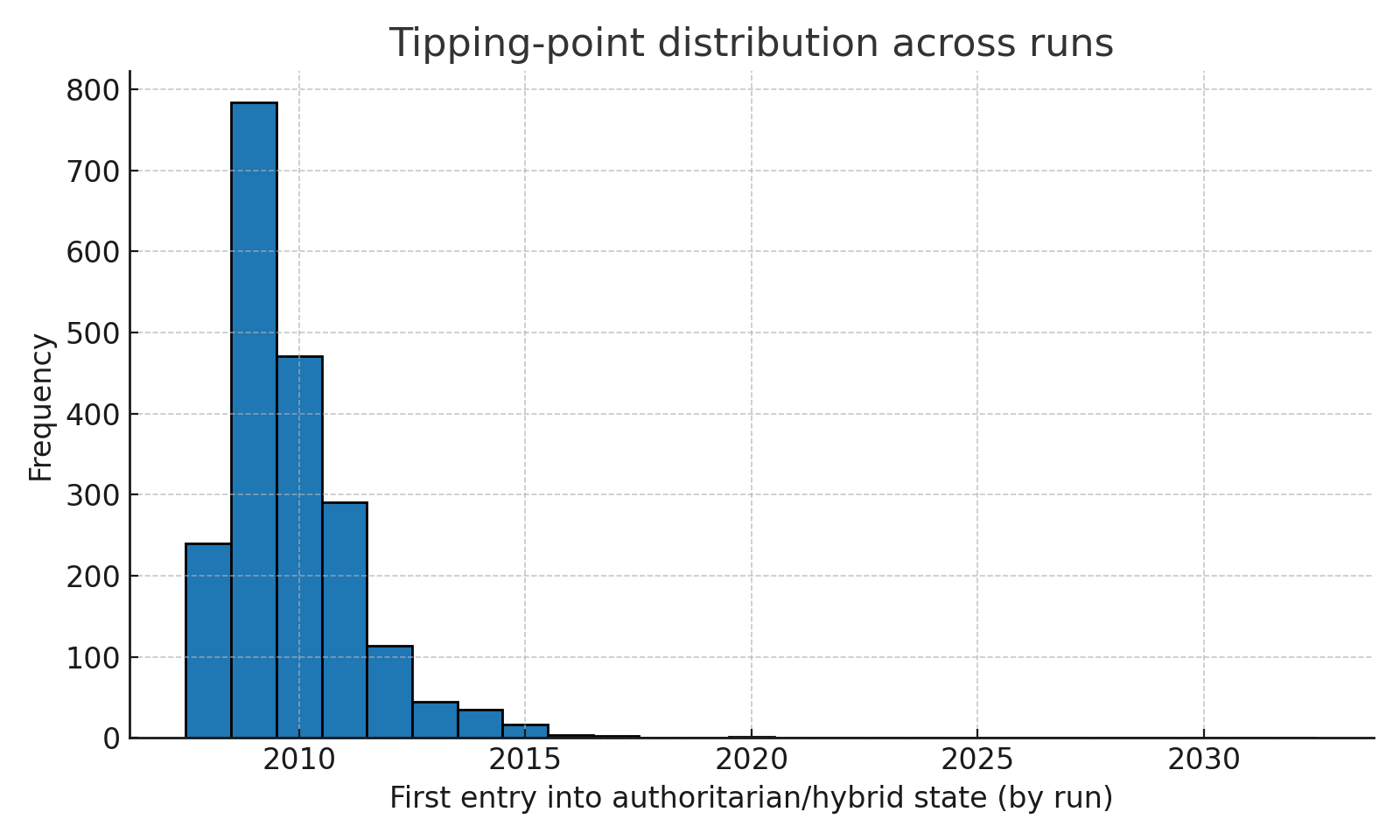How long will the global rightward shift last? Our Metakinetics model runs the numbers
The recent wave of far-right and authoritarian politics is not a one-off surge. Our latest Metakinetics simulation suggests it is settling into a prolonged, unstable equilibrium that could persist for most of the next decade.
A model built from recent history
We fed the model with the major forces political scientists and watchdogs identify as drivers of the global rightward shift:
- Economic insecurity and stagnant wages
- Cultural backlash to demographic and social change
- Erosion of trust in democratic institutions
- Algorithmic amplification of polarizing narratives
- Crisis events that act as accelerants
We anchored the timeline in real-world shocks. The 2008 financial crisis set the stage, the 2015 refugee influx spiked cultural backlash, the 2020 pandemic drove both fear and institutional overreach, and the 2022 cost-of-living crisis gave economic protectionism a new edge.
The trajectory: wobbling, not reversing
The simulation tracks the probability of three political states worldwide: liberal democracy, competitive authoritarianism, and consolidated authoritarianism. Across thousands of runs, the share of the world in hybrid or authoritarian states hovers between 45% and 55% through 2032.

Short-term reversions are common. Many countries that tip toward authoritarianism shift back within a year. But they just as easily swing forward again when another shock hits, leaving the global balance stuck at an elevated level.
How reforms and shocks change the curve
We tested hypothetical reforms in 2024–2026: stronger rule-of-law protections, anti-corruption drives, and stricter platform rules. These reduced authoritarian prevalence by about six percentage points in the mid-2020s. But by the early 2030s, the effect faded. Without deeper changes to the underlying forces, the system reverts to its stressed baseline.

Conversely, removing those reforms barely changed the long-term plateau. What mattered more was the frequency and intensity of new shocks. Another energy crisis, a deep recession, or a major migration surge pushed the authoritarian pressure index back above its tipping threshold and reset the reversion clock.
What breaks the cycle
The model shows that ending the oscillation requires a sustained push on three fronts:
- Rising real incomes over several years, not just a brief recovery.
- Visible wins against corruption to rebuild institutional trust.
- Information environments that reduce the viral payoff for transgressive or extremist content.
Without those, the rightward drift does not “end” on a schedule. It remains as a recurring equilibrium, reinforced by each new crisis.

Method note
This is a prototype Metakinetics run calibrated by hand to reproduce qualitative history, not a fitted forecast. It should be read as a scenario engine that maps plausible pathways, not a prediction with a fixed date. A more rigorous run would fit the model to V-Dem and Freedom House data, plus economic and migration indicators, to validate and refine the tipping points.